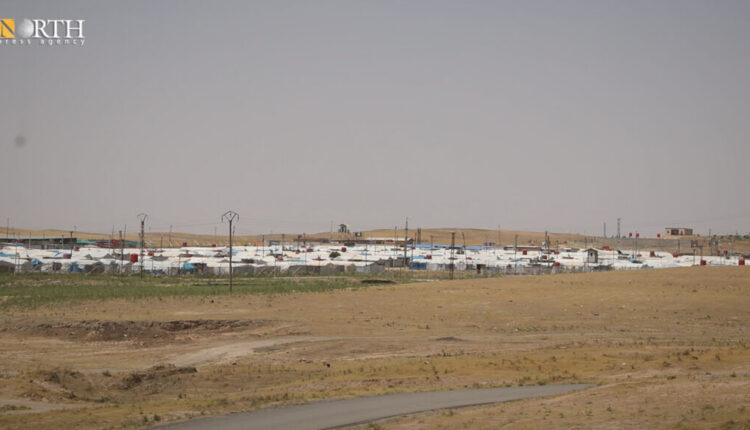
DERIK, Syria (North Press) – What if women of Islamic State Organization (ISIS) could flee? This matter has become the main concern of the 70-year-old Muhammad Abdulsalam these days, especially since he lives less than two kilometers from Roj camp, which is no less dangerous than Hawl camp.
Abdulsalam lives in a state of constant anxiety since the Roj camp has been dedicated for ISIS family members, and his fears increase whenever Turkey renews its bombing of areas in northern Syria and hints at a new ground operation, which, if implemented, could grant ISIS militants a chance to break from prisons and their family members to escape from the camps.

Abdulsalam’s fears have doubled because his village Khana Sere in the countryside of Derik (al-Malikiyah) is so close to the Roj camp on the one hand and fearing “the bombing of warplanes” on the other.
The Roj camp includes 771 families, numbering 2.601 individuals from Arab and foreign countries, who joined ISIS in 2014 when “Islamic caliphate” was declared.
Abdulsalam does not rule out any infiltration by ISIS women, if they manage to escape, to the nearby villages, posing a grave threat to his family since they may carry out acts of vengeance against the residents of the region.
The Roj camp is located in the village of Tel Aswad in the countryside of Derik, and its residents were transferred from the Hawl camp, east of Hasakah.
The Autonousms administration of north and east Syria (AANES) and the Syrian Democratic Forces (SDF) warn that if Turkey launches a ground operation, their forces will be preoccupied repelling the attacks, and this in turn will lead to weakness and defect in protecting the detention centers where ISIS members and their families are held.
In a statement to the English-language BBC, Mazloum Abdi, the SDF Commander in Chief, warned, “Our forces would be busy protecting our own people and families and we wouldn’t be able to guard the camps.”
In the same village, the 50-year-old Turkiya Muhammad’s anxieties are the same as others due to periodic escape attempts and riot cases in the camp.
Even though the camp is well secured by the AANES security forces, Muhammad’s concerns remain, especially in light of the rapid population expansion.
She said, “No matter how tight the camp is, it is not safe ISIS cannot be trusted.”
She added, “We are concerned about our children and families……We are afraid of them because we know that they are slaughtering people and torturing them.”
In light of these dangers, the people of the region are pleading with the US-led Global coalition and guarantor nations [Russia, US] of the ceasefire agreement to avert the Turkish military action.
Following the Turkish incursion in October 2019, Turkey signed two ceasefire agreements, one with Russia and the other with the US stipulating ceasing all hostilities and the withdrawal of the SDF 32 km away from the Turkish border.

The SDF did withdrew from the border areas according to the agreement, but Turkey continues targeting the area.
Farah Hamdo, an official in the Roj camp management, said women in the camp continually arrange and plot their escape and that these efforts increase during Turkish attacks on the region.
Since the recent Turkish escalation on northern Syria that started on Nov. 20, residents of Khana Sere have been defending the village and their homes themselves out of concern that ISIS women may infiltrate the area if they manage to escape the camp.
The 65-year-old Sheikhmous Saleh, a resident of the same village, checks the area around his home several times each night, fearing mass escapes or an attack by the ISIS sleeper cells.
